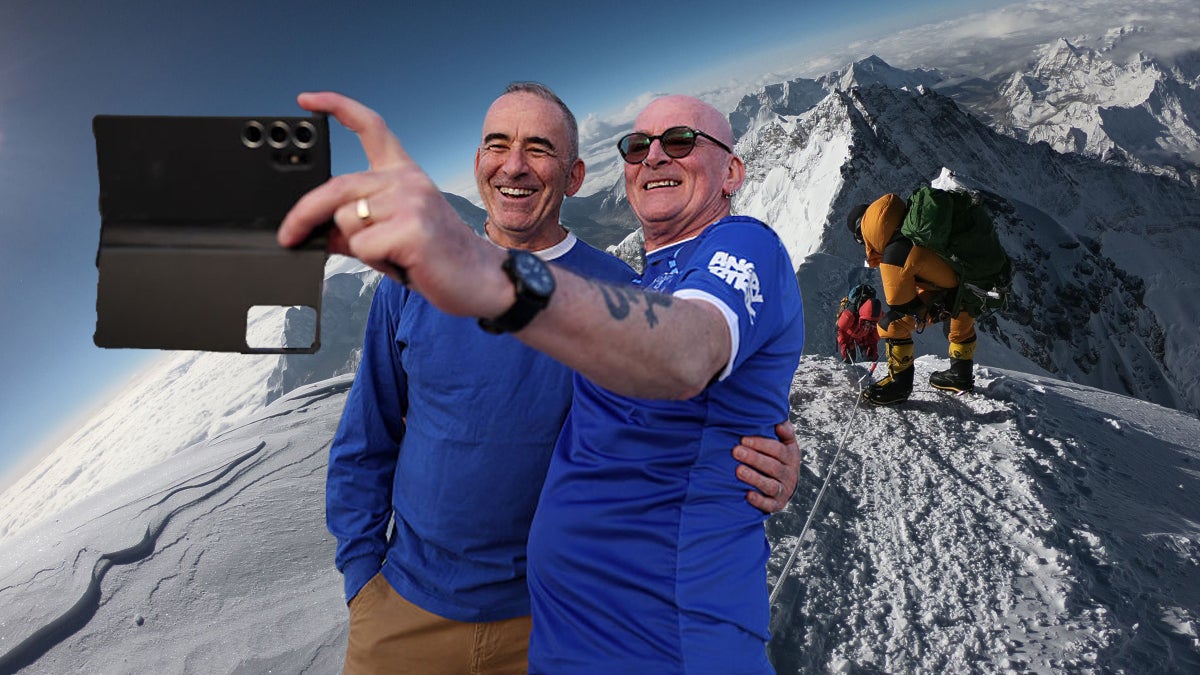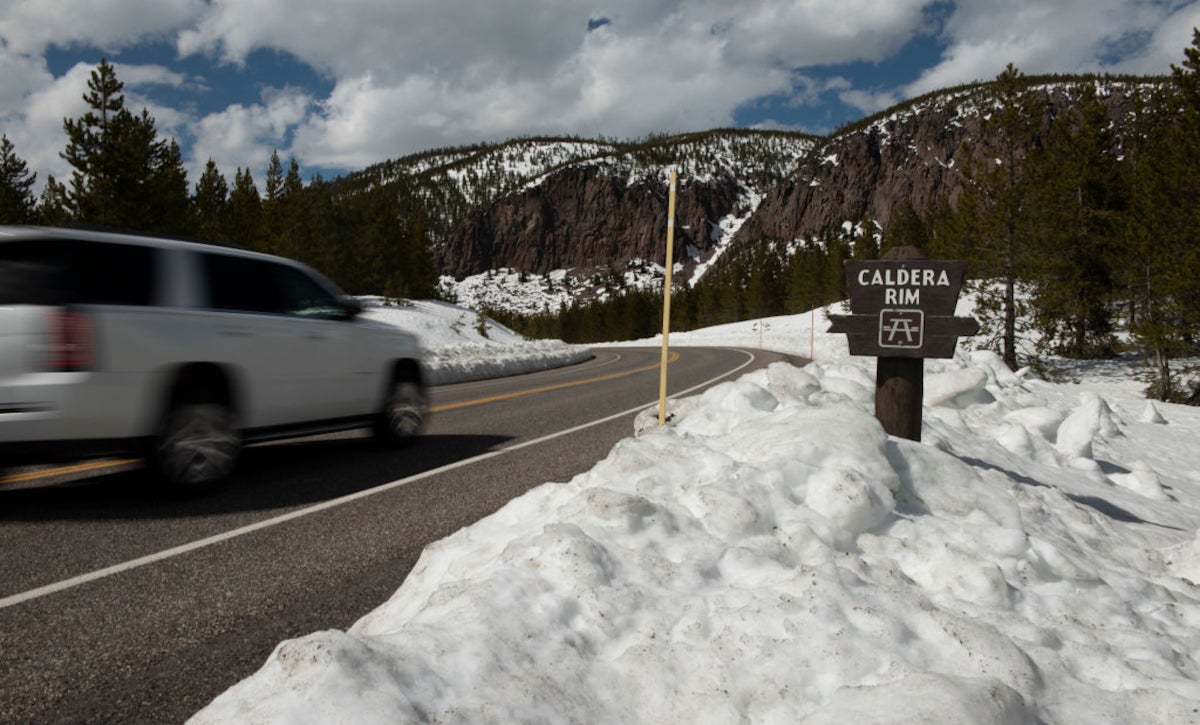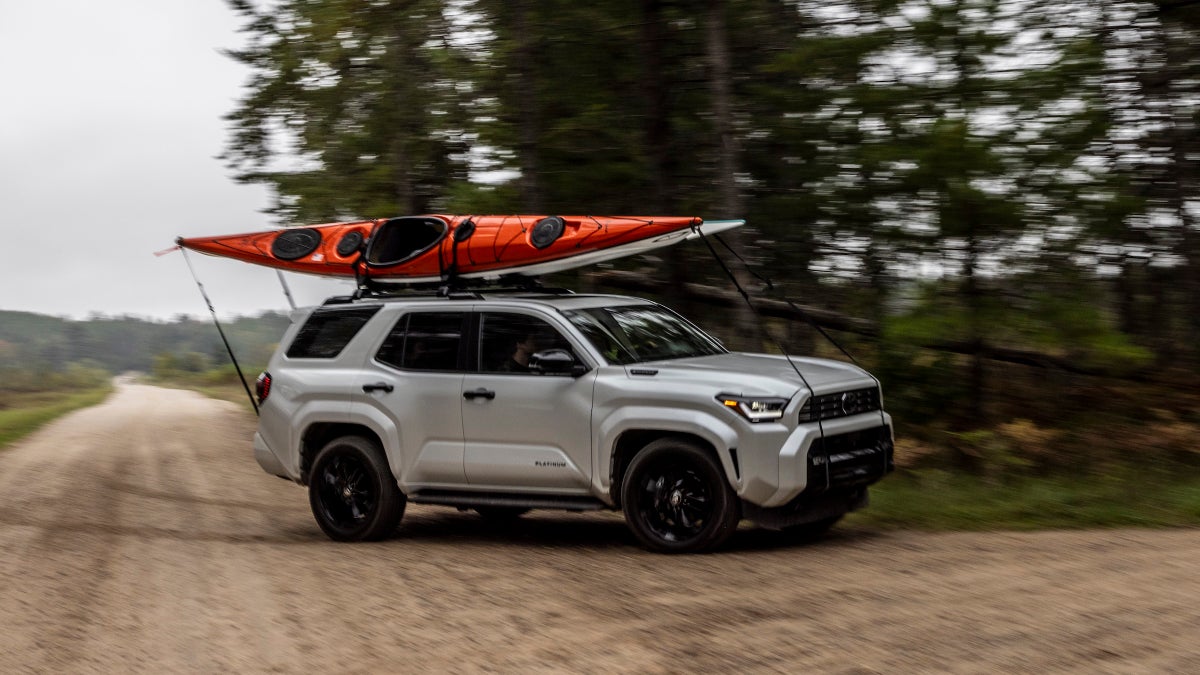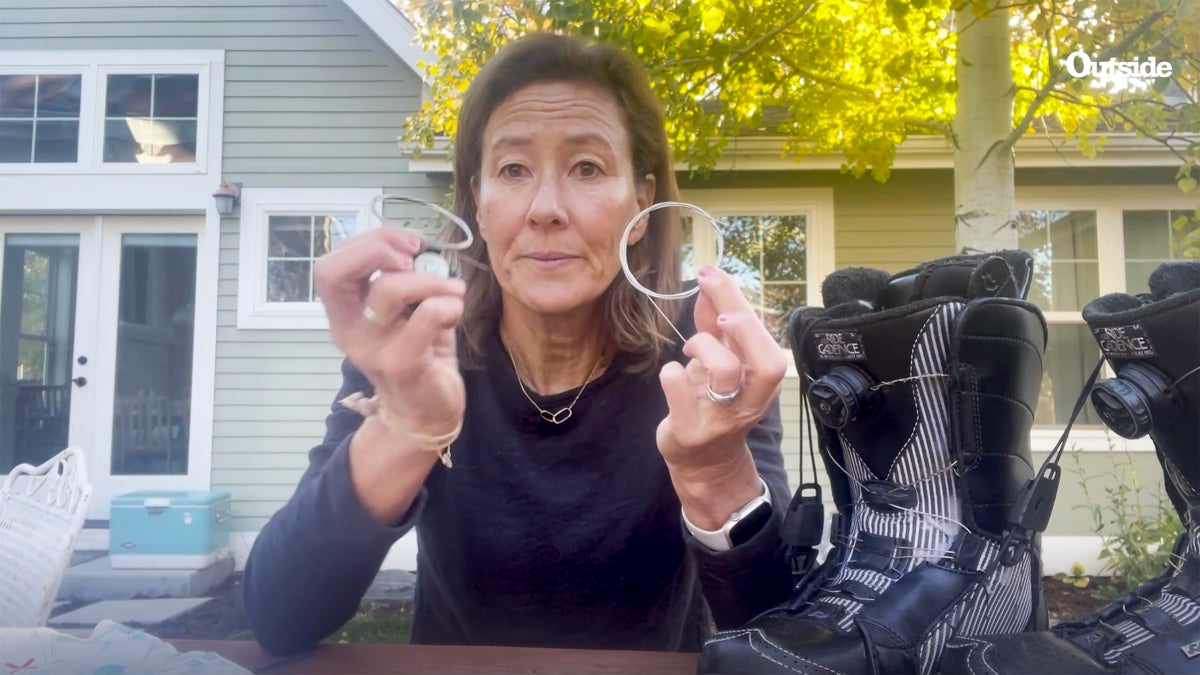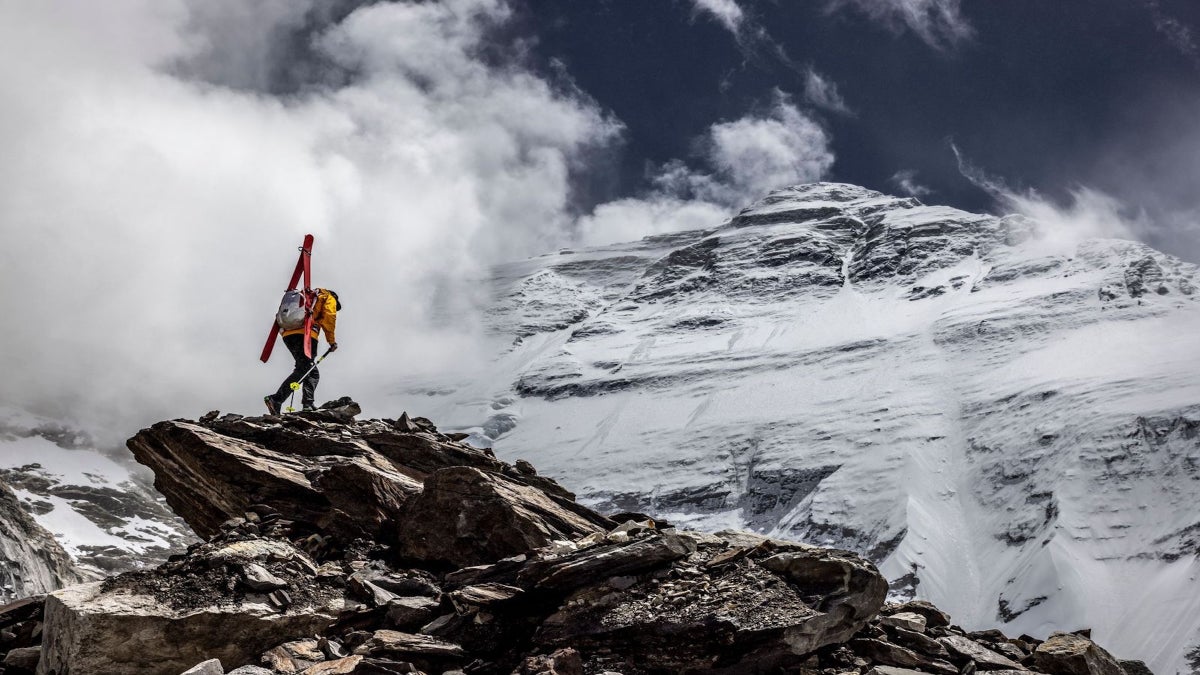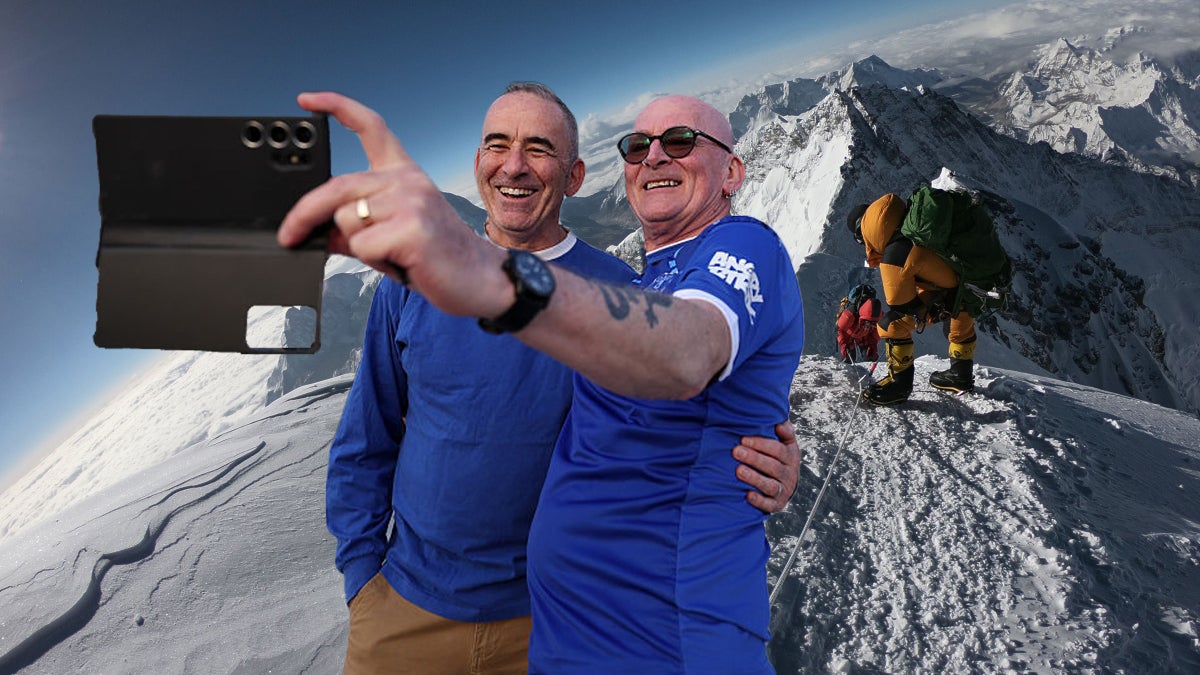
Just before noon on July 20, 2025, an Italian mountaineer named Marco Confortola trudged to the summit of 26,509-foot Gasherbrum I in Pakistan. Confortola snapped photos of himself to commemorate the moment: in ascending the peak, he claimed to have climbed all 14 of the world’s mountains above 8,000 meters.
Or had he?
In the following weeks, two Italian mountaineers named Simone Moro and Silvio Mondinelli called Confortola’s achievement into question. They contacted the Italian Alpine Club’s journal, Lo Scarpone, to dispute the claim, alleging that Confortola had failed to actually reach the summit on some of the 14 peaks. Confortola hit back at them in an interview published by Lo Scarpone. A lengthy online fracas ensued.
“I went to the summit, and then people can say what they want,” Confortola told Lo Scarpone. (Confortola did not respond to requests for an interview with Outside.)
Why did these mountaineers dispute Confortola? The heroic photos he uploaded to social media from the summits, they said, appeared to be manipulated versions of images taken by other climbers. In the Lo Scarpone article, Moro and Mondinelli included screengrabs of Confortola’s photographs, as well as photos from other climbers, to show the similarities.
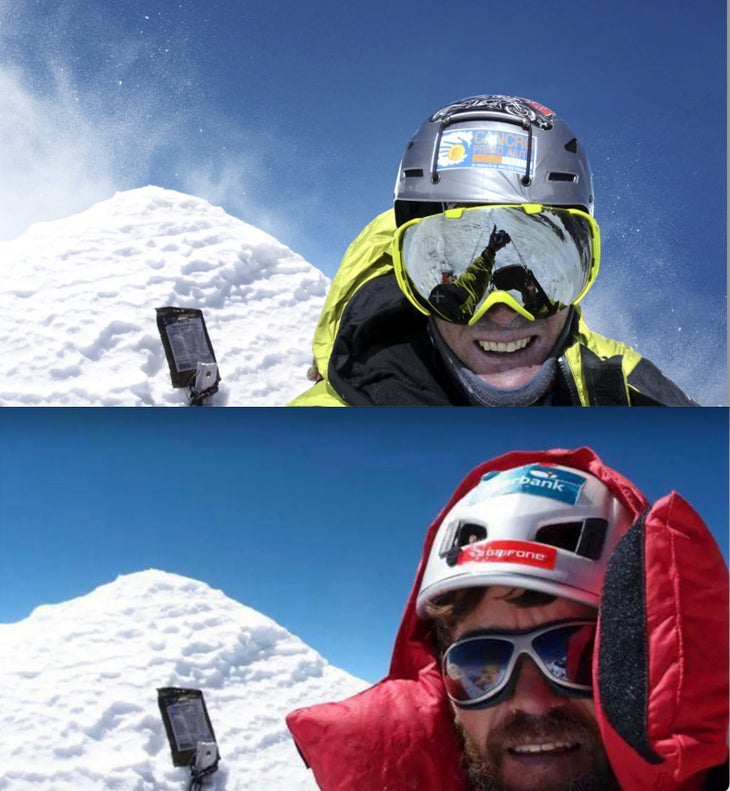
Confortola’s photo from atop 28,169-foot Kanchenjunga, they pointed out, looked like a cropped version of an identical photograph taken by a different climber, Pakistan’s Shehroze Kashif. Confortola’s photo on 27,825-foot Makalu looked eerily similar to one taken by his countryman, Marco Camandona. In an interview with the Italian climbing website Montagna.TV, Comandona accused Confortola of stealing his photo. A summit selfie Confortola posted from 27,940-foot Lhotse is also nearly identical to that of Spanish climber Jorge Egocheaga.
“If someone took a summit photo in the same way, does it necessarily have to be a stolen photo?” Confortola told Lo Scarpone.
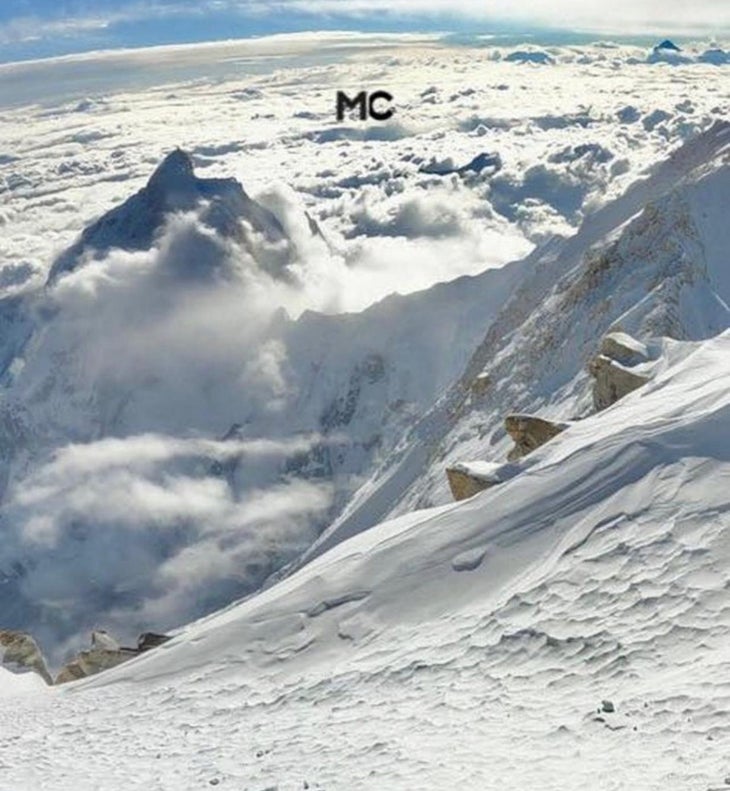
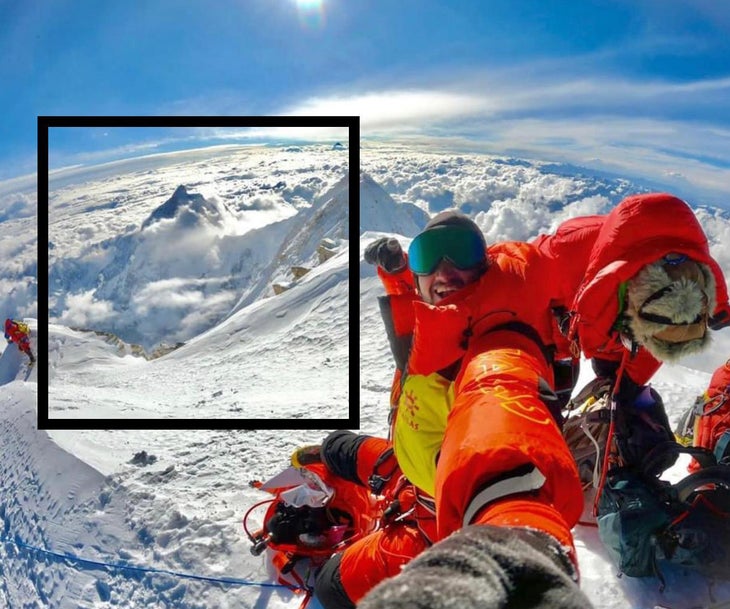
The accusations of the false summits—and the photographs that were called into question—generated a small tonnage of media intrigue. Stories about the accusations appeared in UK newspapers The Daily Mail and The Times, German newspaper Bild and Spanish news outlet Marca, and on multiple mountaineering websites. Other than a short interview in the Italian newspaper La Stampa, Confortola did not provide comment to any of the outlets.
“I’m being smeared with mud and accusations,” he told the newspaper.
But a growing chorus of mountaineers did comment to outlets, including Italian great Reinhold Messner. The 81-year-old Italian said that he, too, doubted that Confortola actually climbed some of the peaks.
“If someone claims to have reached the summit of an eight-thousander, he has the duty to show proof,” Messner told the Italian daily newspaper La Repubblica. “If this is missing, the alleged ascent remains a personal matter: for the history of mountaineering, it does not exist.”
A Long History of Fake Summit Photos
Confortola is not the first climber to have his accolades called into question due to photography. Accusations of false achievements on high mountains have existed for more than a century, and in almost every case, photographs have played an instrumental role in confirming or debunking the achievement.
In 1906, American explorer Frederick Cook claimed the first ascent of 20,310-foot Denali, but his achievement was later debunked as a fake, and his supposed summit photo revealed to have been taken on a different mountain. Today, that mountain is affectionately known as Fake Peak. Italian alpinist Cesare Maestri claimed a first ascent of Argentina’s 10,262-foot Cerro Torre in 1959. But today, his achievement is widely believed to have been faked.
Austrian alpinist Christian Stangerl admitted to fabricating an ascent of 28,2510-foot K2 in 2010. The late Swiss alpinist Ueli Steck has also been dogged by claims of faked ascents. In 2016, two different pairs of Indian mountaineers used photoshopped images to claim Mount Everest summit certificates.
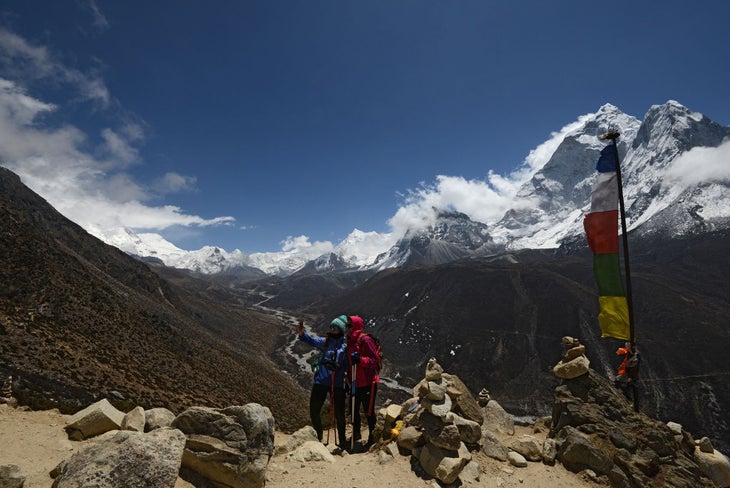
One of the strangest fake summit attempts I’ve ever seen occurred in 2023, when an anonymous Reddit user posted on the Reddit forum r/Mountaineering that he and two partners had summited 24,452-foot Muchu Chhish, a peak in remote Pakistan. This was a big deal, because Chhish, at the time, was the highest unclimbed mountain in the world.
The post elicited a lot of buzz—it became r/Mountaineering’s most-upvoted post of all time. But within the professional climbing community, there was a strong feeling of skepticism. The photos the individual posted did not appear to be from the summit of a mountain as high as Muchu Chhish.
I communicated briefly with the author of the Reddit post. He refused to connect on a phone interview, or to provide GPS evidence of his ascent. He later deleted the photographs from Reddit and vanished. “It was so obviously fake that we didn’t spend much time on it,” Dougald MacDonald, executive editor of the American Alpine Journal, told me at the time. “You have to wonder: Why?”
Do Experts Think The Photos Are Fake?
I showed Confortola’s disputed summit photo from the summit of Lhotse to Connor Plunkett and Galen Reich, two researchers at the open-sourced intelligence group Bellingcat. I asked them if they believed the image was real or fake. They told me that specific details in the photo led them to believe they had undergone some level of manipulation.

“I try to be careful when making claims,” Plunkett said. “But the evidence strongly suggests that there’s been some editing here.”
When accused of faking the Lhotose photo, Confortola told Lo Scarpone, “That’s another lie. I took the photo.”
Plunkett said that Confortola’s photo appears to have been manipulated through a digital editing technique known as cloning. This entails copying and pasting certain sections of a photograph, or groups of pixels, from one region of a photo to another.
“There is obvious cloning going on in the background of this image,” Plunkett explained.
The image, a selfie, appears to show Confortola crouching in front of the Lhotse summit, with wind-swept snow spray billowing off the top. The angle of the photo, and Confortola’s placement in it, is almost identical to the one that Egocheaga took and put online in 2013, the same year when Confortola allegedly climbed the peak.
Plunkett and Reich pointed out that some sections of the billowing snow—which isn’t present in Egocheaga’s image—are identical, such as a cluster of snow spray immediately to the right of Confortola’s helmet and a cluster near the top of the photo, directly above the apex of the summit. The identical pattern of snow suggests that the snowflakes were added to the photo with editing software.
But both Reich and Plunkett told me that there is no way to prove with 100-percent certainty that an image is fake. Researchers must rely on their own eyes, and on a growing collection of online tools.
“You don’t need to be a forensic image expert to be able to tell that something has been manipulated,” Plunkett said.
How the Professionals Look for Photo Manipulation
Plunkett and Reich told me that they rely on a collection of free online tools to help them determine whether or not a photograph is legitimate.
Plunkett and Reich recommend starting with an image’s EXIF (Exchangeable Image File Format) data, which is embedded in digital photos. This information often includes the date and time a photo was taken, and may also contain the latitude, longitude, and even elevation. Users can use online tools like MetaData2Go and Jimpl to find the metadata in a given photo, although this tactic is a long shot, as social media platforms typically wipe metadata when files are uploaded. Even taking a simple screenshot will result in an identical photo without all of the original metadata.
If that doesn’t work, Reich and Plunkett said to try reverse-image searching portions of an image, such as for the bits of snow spray. For mountaineering photos in particular, they recommend cropping out the entire foreground—which often includes the triumphant climber— and reverse-image searching the background. Google is a good start, but they also recommend the Russian search engine Yandex to access a wider net of photos.
They also advise using an augmented reality tool like PeakVisor to analyze the peaks that would be visible in the background of a purported summit photo. The damning element of the alleged Muchu Chhish summit photographs is that no tall peaks appear in the background, yet the mountain is ringed by other high points.
“The accuracy of their terrain data is much better than Google Earth,” Reich said.
Reich said the easiest way to spot whether a summit photograph has been stolen from a different climber is to use a publicly accessible tool called Forensically, which has a clone-detection feature.
I used a different tool, called MaxAI, to layer the Lhotse images of Egocheaga and Confortola on top of each other. I noticed that every ridge of snow in the two photos is exactly the same.
A Need for New Ways to Verify Summits
Rodolphe Popier, a veteran alpine chronicler and record-keeper for mountaineering archival sites 8,000ers.com and The Himalayan Database, told me that he has held suspicion of Confortola’s climbing achievements for years.
Popier, who was among the first to raise serious questions about claimed ascents by Steck and Slovenian climber Tomo Česen, said that the problem of false summit photographs stems from mountaineering’s lack of an official institution to verify ascents.
“There is no court of law to judge mountaineering,” he said. “The only court is public opinion. Today, that public opinion is represented by social media, which is very quick to react, but is not always a good judge.”
Indeed, climbers make news of their ascents by publishing summit photos on Instagram or Facebook so that their followers and sponsors can see. But it’s easy to copy or download these images from the Internet.
These days, hundreds of climbers often summit Mount Everest during the same week amid the spring climbing season. Some of these climbers have sponsorship dollars and other incentives at stake in reaching the top.
Amid the influx of people on the world’s highest mountains, Popier believes climbers should meet a minimum standard of proof when they claim a successful ascent. He points to GPS tracking files, summit photographs showing clearly recognizable geographic features, as two ways to verify a climb.
That’s an argument that even Confortola may agree with. In his short interview with Lo Scarpone, he advised other mountaineers to do everything they can to make sure their climbs are able to be verified.
“At this point, I’d advise all climbers to always carry a satellite tracker, to avoid all this pointless controversy,” he said.
In lieu of presenting hard proof of a successful climb, Popier said mountaineers should expect their accolades to be doubted.
“It’s very simple,” said Popier. “If you’re going to claim something publicly, be prepared to prove it. If you have no proof, don’t be surprised when you are criticized.”
The post How to Spot a Fake Summit Photo appeared first on Outside Online.










